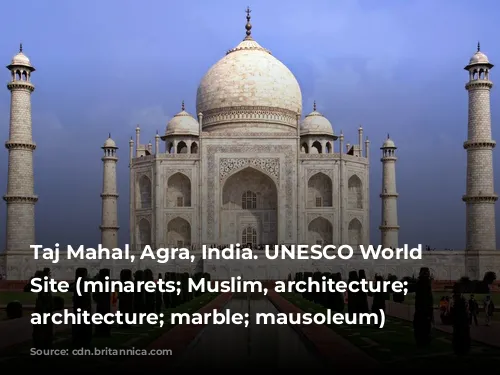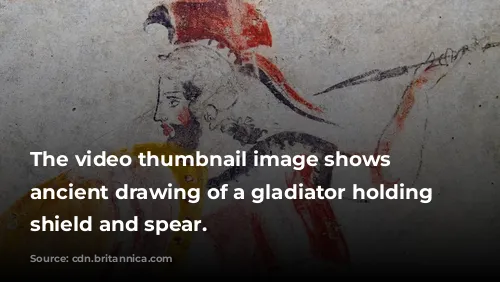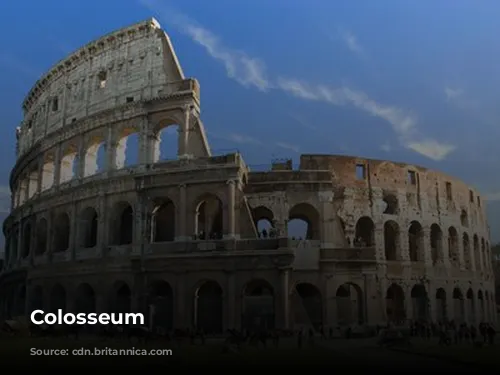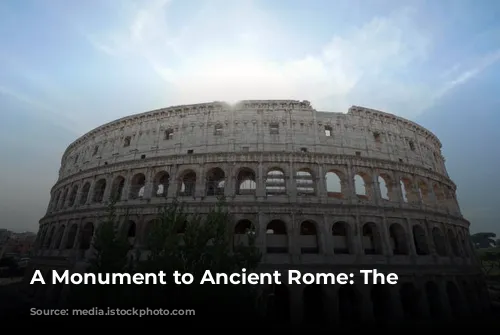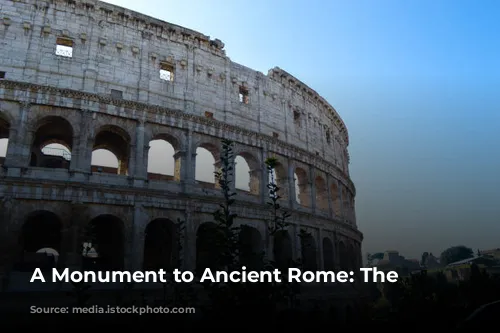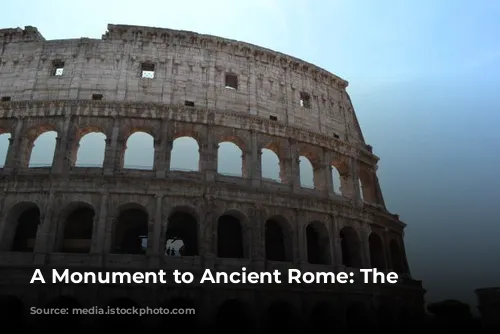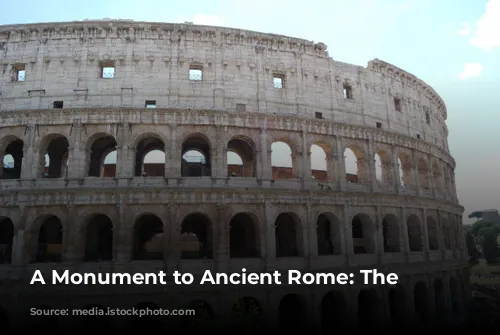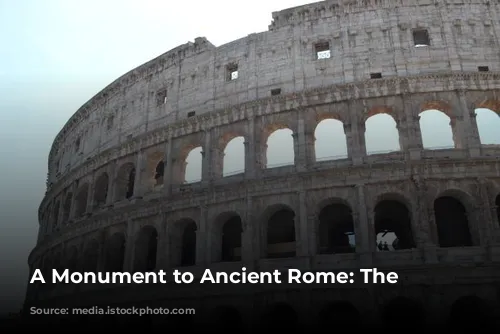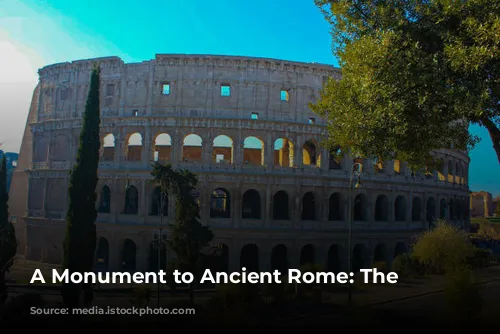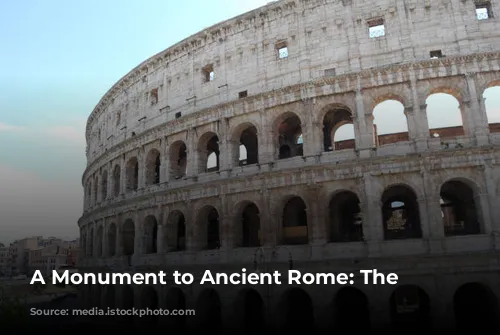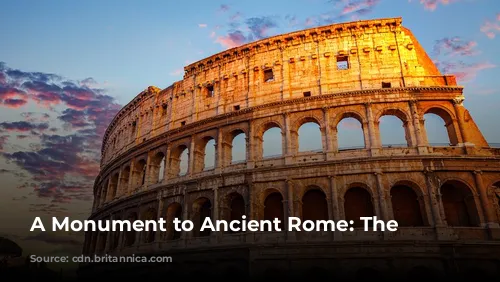The Colosseum, a towering testament to ancient Rome’s architectural brilliance and engineering prowess, stands as one of the few largely intact structures from that era. This iconic landmark isn’t just a relic of the past; it’s also a significant source of income for the Italian government. In 2018, the Colosseum, the Roman Forum, and Palatine Hill together generated over $63.3 million (€53.8 million), making it the top tourist attraction in Italy.
A History of Triumph and Decline
The Colosseum’s story is a captivating journey through time, marked by periods of grandeur and neglect. After the fall of the Western Roman Empire, the arena fell into a state of disrepair. During the 12th century, the Frangipane and Annibaldi families, influential Roman families, used the Colosseum as a fortress. This remarkable structure even served as a quarry in the late 15th century, when Pope Alexander VI permitted the removal of its materials. After over a thousand years of being neglected, the Colosseum received much-needed restoration efforts, funded by the Italian government in the 1990s.
A Monument to Entertainment and Imperial Power
The Colosseum was constructed as part of a grand project by the Roman emperors to revitalize Rome following the turbulent “Year of the Four Emperors” in 69 CE. Emperor Vespasian, like other emperors before him, envisioned the Colosseum as a hub of entertainment, hosting a variety of spectacles like gladiator fights, animal hunts, and even mock naval battles. The structure’s grand design reflected the ambitions of the Roman Empire, showcasing their power and influence.
Construction and Funding
Construction of the Colosseum began under the reign of Emperor Vespasian between 70 and 72 CE. His son and successor, Titus, dedicated the completed structure in 80 CE. Emperor Domitian, who followed Titus, added the Colosseum’s fourth story in 82 CE. The arena’s construction was funded with spoils from Titus’s conquest of Jerusalem in 70 CE. Sadly, this funding was obtained through the enslavement of Jews from Judea, a stark reminder of the Roman Empire’s ruthless tactics.
An Architectural Masterpiece
The Colosseum, also known as the Flavian Amphitheatre, is an elliptical structure, standing four stories tall at its highest point. Made of stone, concrete, and tuff, it measures a whopping 620 by 513 feet (189 by 156 meters), boasting the capacity to hold up to 50,000 spectators. The Colosseum’s design and scale were truly remarkable for its time.
A Symbol of Imperial Ambition
The Colosseum, situated east of the Palatine Hill, was built on the site of Nero’s Golden House. The artificial lake, once a central feature of the palace complex, was drained to make way for the arena. This decision was symbolic, demonstrating Vespasian’s intent to replace the tyrannical emperor’s private luxury with a public amphitheater that would unite and entertain the Roman populace.
Engineering Marvels
Unlike other amphitheaters that were built into hillsides for support, the Colosseum is a freestanding structure. It utilizes a complex system of barrel and groin vaults, showcasing Roman engineering ingenuity. The Colosseum boasts three tiers adorned with arcades and engaged columns, following the Doric, Ionic, and Corinthian orders. This architectural arrangement influenced the Renaissance codification known as the “assemblage of orders.” The main structural framework is made of travertine, the secondary walls of volcanic tufa, and the inner bowl and arcade vaults of concrete.
A Spectacle for the Masses
The Colosseum’s massive size allowed it to host a variety of spectacles, accommodating up to 50,000 spectators. A retractable awning, known as the velarium, provided shade from the sun. The velarium, supported by masts extending from the top story, required the expertise of hundreds of Roman sailors to manipulate its complex rigging. The Colosseum witnessed thousands of gladiatorial combats, animal hunts, and even mock naval battles, attracting crowds of Romans eager for entertainment. However, there is uncertainty regarding the Colosseum’s role in the martyrdom of early Christians.
From Glory to Restoration
In medieval times, the Colosseum underwent a transformation. It was used as a church, then as a fortress by two influential Roman families, the Frangipane and the Annibaldi. The Colosseum’s magnificence suffered from the ravages of time, facing damage from lightning, earthquakes, vandalism, and pollution. Valuable marble seats and decorative materials were removed, turning the site into a quarry for over a thousand years. The 19th century marked the beginning of earnest preservation efforts, with notable contributions from Pope Pius VIII. In the 1990s, a significant restoration project was undertaken, breathing new life into this ancient marvel.
A Legacy of History and Culture
The Colosseum continues to draw millions of visitors annually, standing as a major tourist attraction in Rome. The Colosseum is more than just a tourist destination; it represents a vibrant tapestry of history, culture, and engineering prowess. Regular exhibitions showcasing ancient Roman culture bring this historical monument to life, reminding us of the legacy of the Roman Empire and its enduring influence on Western civilization.
